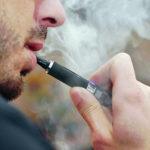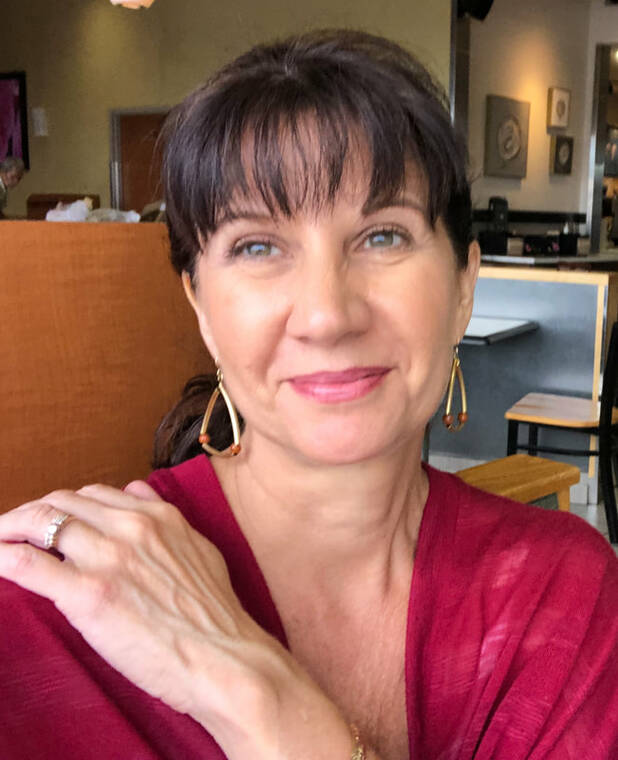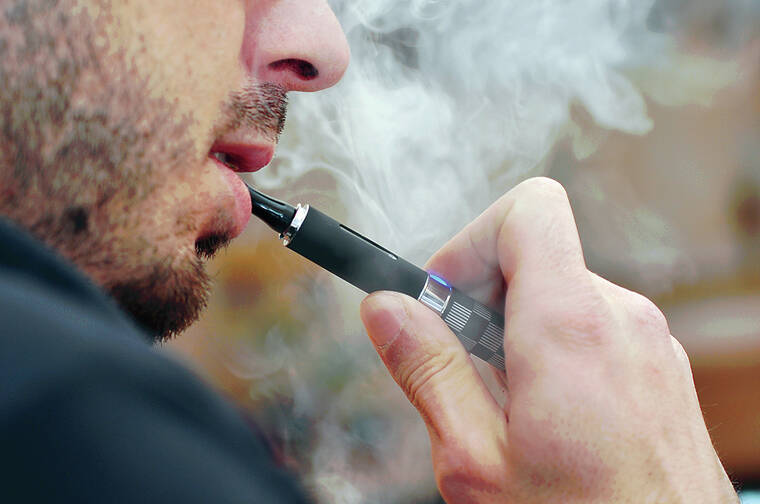Vaping is a nationwide epidemic, according to the U.S. Centers for Disease Control and Prevention, and a 2019 National Youth Risk and Behavior Survey reported nearly half of high school students and 36% of middle school students in Hawaii County have tried vaping.
Sally Ancheta, who serves as East Hawaii’s Drug Free Coalition coordinator, has heard of keiki as young as second grade experimenting with electronic smoking devices, or ESDs.
“The youngest that we’ve heard of youth vaping on campus is second grade, but we’re starting to see more fourth- to sixth-graders being suspended for vaping on campus,” said Ancheta. “We’re seeing an increase in requests for services at elementary schools for youth vaping prevention too, especially in 2022.”
In 2019, the state Department of Health reported Hawaii had one of the highest youth vape rates in the nation, with 1 in 3 teens vaping on a regular basis.
Native Hawaiian youths were disproportionately affected, with 27.2% vaping regularly, doubling the averages of other ethnic groups. Native Hawaiians also reported starting at earlier ages than the rest of their peers, according to the DOH.
“For decades, the tobacco industry has profited from targeting youths of color and other marginalized and low-income populations,” said Jahkotta Lewis, Tobacco Free Hawaii Island Coalition coordinator. “It’s a combination of things and a socioeconomic issue. If you look at what communities have high concentrations of these retailers that sell vape products, they’re going into low socioeconomic areas.”
A 2017 survey found that there were 174 retailers in Hawaii County selling ESD products, some within 100 yards of public schools.
Sting operations were conducted by the University of Hawaii, the DOH, and local law enforcement in 2015 and 2016, where 14- to -20-year-old students visited gas stations, tobacco stores and other businesses without an ID to buy cigarette and vape products.
“Primarily, they were not even asked for their ID,” said Ancheta of the results. “Forty-eight percent of the clerks didn’t ask for ID, and that was very common for 17- to 19-year-olds.”
Ancheta and Lewis also cited social media as a factor in youth vaping, especially during the pandemic when students relied on online services.
“In terms of advertising and counter advertising campaigns, social media is a really strong tool,” said Lewis. “They will actually pay influencers to try new flavors to show their followers new products and engage in vaping challenges.”
Ancheta said the problem stems from lack of regulation.
“The advertising ban on cigarettes that went into place in the 1970s is not in place for E-cigarettes,” she said.
There are over 15,000 vape flavors including apple juice and Maui mango which appeal to kids.
“Flavors are like the newest pair of tennis shoes,” said Ancheta. “Everybody wants them, and that’s what we’re seeing on our school campuses.”
Chemicals found in artificial flavoring present health risks. The CDC identified over 2,000 toxic chemicals in ESDs and vaping aerosols including nicotine, carcinogens, heavy metals and diacetyl, which contribute to bronchioles obliterans, or popcorn lung, as well as EVALI, or E-cigarette and Vaping Associated Lung Injury.
Symptoms range from shortness of breath and chest pain to intubation, heart attacks and even death.
“The diacetyl causes that terrible popcorn lung where you have immense inflammation and scarring of the lungs that can result in lung transplants and even death,” Lewis said. “We started getting a lot of cases nationally in 2019, and it was being confused with COVID.”
A study from ABC News stated smoking and vaping also increased the risk of death from COVID-19 by 45%.
These toxins counter the idea that vaping is safer than traditional cigarettes.
“As an educator in tobacco control for the past 20 years, I have never seen a tobacco product where youth were so highly addicted so quickly and got sick so fast,” Ancheta said. “One of the things parents don’t understand is how much nicotine is in these devices.”
Nicotine levels from vape pods like Suorin, which Ancheta says are common at Hilo High School, are equivalent to 90 cigarettes.
“We never saw high school students smoking more than a handful of cigarettes when I was running American Lung Association and cessation programs,” she said. “The most would be half a pack a day. Now, these kids are starting at two packs a day of nicotine when they vape.”
Quitting can be difficult for adolescents without having the same options as adults.
“Kids don’t have cessation programs. They have support, but they’re not allowed to take these medicines or any sort of medical intervention, so it’s really insidious what the tobacco industry is doing,” Lewis said. “When nicotine rewires certain kids’ brains, it causes all kinds of problems like memory issues and irritability. They have problems concentrating. All this stuff that really hinders decision-making.”
The proposed solution is a multipronged approach focusing on education, awareness and legislation, tackling both behavioral and systemic issues.
“When we do presentations for parents, we tell them vape products can look like sharpie pens or permanent markers, or a writing utensil, and I think that they’re just not aware of the harm,” Ancheta said. “As I talk to parents across Hawaii County, that’s what I hear back. They’re just saying ‘I never knew.’”
Resources are available for youth struggling with vape addiction, including mylifemyquit.com, flavorshookkids.org, hiphi.org and strongertogether.hawaii.gov.
Email grant phillips at gphillips@hawaiitribune-herald.com.











